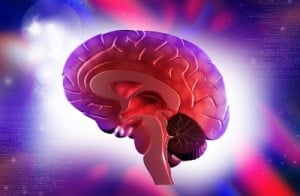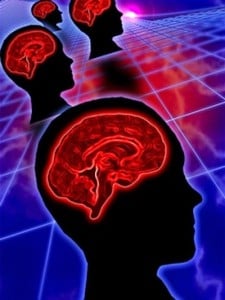 In the United States, anxiety disorders affect 40 million adults above the age of 18, making it the most common mental illness. Although less common with children, 6% suffer from anxiety disorders that have serious enough symptoms to require treatment. Evidence continues to support the interconnectedness of the mind and body. Therefore, as mentally debilitating as anxiety can be, it can take a serious physical toll on the body as well.
In the United States, anxiety disorders affect 40 million adults above the age of 18, making it the most common mental illness. Although less common with children, 6% suffer from anxiety disorders that have serious enough symptoms to require treatment. Evidence continues to support the interconnectedness of the mind and body. Therefore, as mentally debilitating as anxiety can be, it can take a serious physical toll on the body as well.
When a person begins to feel anxiety, the body puts itself into “fight or flight” mode by releases various hormones such as cortisol and creating an increase in blood sugar levels, producing more energy within the body to use in physical activity. For the first generations of human beings, this was meant to prompt the body of immediate physical danger or emergency, such as the potential of being injured by a predator. This same reaction happens for people today, but when the danger would subside in the past, the response would dissipate, whereas today many people hold on to stress, and the physical reaction lingers. This has the potential to cause serious distress to the body. When blood sugar levels rise, there is an excess of fuel available for use that should be use for physical activity, but when it is not used this way, it can cause serious short-term and long-term consequences. Additionally, if a person is already suffering from a physical illness or condition, anxiety has been shown to exacerbate symptoms and accelerate death in life-threatening cases.
Short Term Physical Side Effects of Anxiety
- Chest Pain
- Dermatological
- Diarrhea
- Dizziness
- Dry Mouth
- Fatigue
- Frequent Urination
- Generalized Weakness
- Headache
- Hyperventilation
- Increased Heart Rate
- Irritability
- Lightheadedness
- Muscle Pain
- Nausea
- Nervous Motion (such as bouncing or shaking)
- Numbness in Hands
- Shaking Hands
- Shortness of Breath
- Short-term Memory Loss
- Sweating
- Temperature Shifts
- Trembling
- Trouble concentrating
- Trouble sleeping
- Twitching
Long Term Physical Side Effects of Anxiety
- Bruxism (teeth grinding)
- Chronic Respiratory Disorders, such as Asthma
- Decreased Fertility
- Decreased Sex Drive
- Depression
- Digestive Disorders, such as IBS
- Irregular Period
- Hair Loss
- Heart Attack
- Heart Disease
- Insomnia
- Memory Loss
- Migraines
- Muscle Tension
- Premature Coronary Artery Disease
- Tooth and Gum Damage
How Neurofeedback Can Help
Despite the many benefits of anxiety reduction, unfortunately about 30% of people suffering from anxiety do not seek treatment. Neurofeedback sets to find how and where anxiety is being created in an individual’s brain, and then helps the brain learn how to change its behavior. Additionally, neurofeedback sessions target the symptoms being created by the anxiety in an effort to reduce and eliminate them. Treating the root of the anxiety in the brain in addition to the symptoms the anxiety is producing will prevent, or reduce the long-term effects of anxiety on the body. For those suffering from a chronic illness, reducing the symptoms of anxiety may slow progression of the illness and make symptoms more manageable. Neurofeedback is risk-free, easy, durable, and medication-free, making it an excellent choice to find relief from anxiety.
To learn more about how neurofeedback can put an end to your anxiety symptoms, schedule a free consultation with our director Dr. Jolene Ross.
Image courtesy of marin at FreeDigitalPhotos.net








